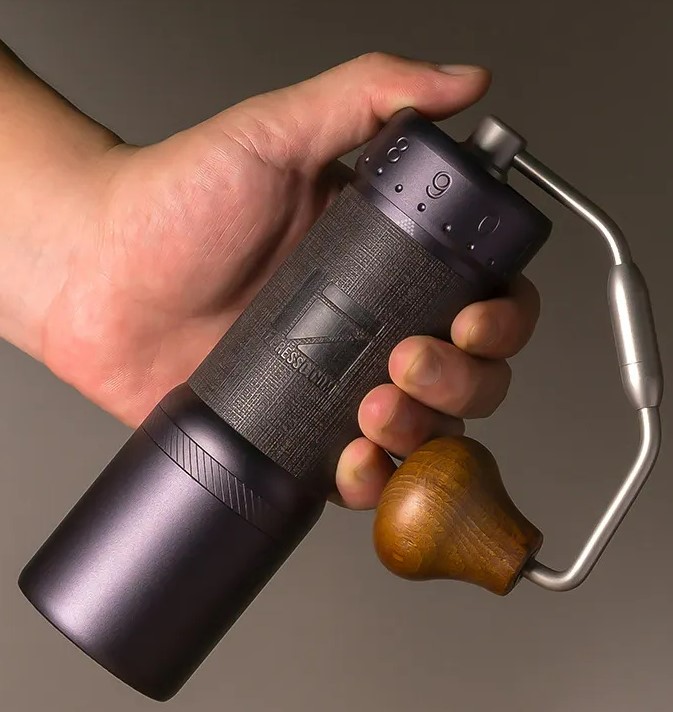Master the Art of Grinding Coffee Beans: An Overview to Coffee Grinders
For coffee lovers, the procedure of grinding coffee beans is even more than simply a routine task; it is an art type that can substantially affect the flavor and quality of the final brew. Comprehending the nuances of various mill kinds, picking the ideal work size, and employing the right techniques are necessary actions in the direction of achieving that perfect cup of coffee.
Sorts Of Coffee Grinders
There are three primary types of coffee grinders typically utilized by coffee enthusiasts: blade grinders, burr grinders, and manual mills. Blade mills are the a lot of standard kind, making use of a straightforward blade to cut the coffee beans. While they are cost effective and very easy to use, they typically lead to unequal coffee grounds because of inconsistent grinding. Burr grinders, on the various other hand, offer more precision by crushing the beans between a moving grinding wheel and a non-moving surface. This causes a consistent work size, which is critical for a consistent coffee taste. Burr mills can be found in both flat and conical forms, each offering a little various grinding attributes.
Hand-operated mills, as the name suggests, call for hand-operated initiative to grind the coffee beans. They are typically preferred by those that enjoy the process of hand brewing coffee or for those that value transportability. Manual mills can differ in layout, from basic handheld versions to much more intricate counter top versions. While they may call for more initiative, manual grinders supply control over the grinding process, permitting users to change the work size to their choice. Each kind of coffee grinder has its benefits and ideal use instances, catering to the varied choices of coffee enthusiasts.

Picking the Right Work Size
With an understanding of the different sorts of coffee mills, the following critical action in achieving the best mug of coffee is picking the right grind size. The grind size plays a substantial duty in identifying the flavor profile of your coffee (1Zpresso J-Ultra). Different brewing techniques need specific work dimensions to optimize the extraction of flavors from the coffee grounds
For a coarse grind, ideal for French press and cold brew methods, the coffee beans should resemble breadcrumbs, providing a robust and bold taste. Medium-coarse grinds, ideal for Chemex or Clever Dripper, have an appearance comparable to crude sand, supplying a well balanced preference.
Tool grinds, commonly made use of in drip coffee manufacturers, have an uniformity looking like regular sand, leading to a well-rounded taste. Great grinds, best for coffee devices, are similar to table salt, producing an abundant and extreme taste. Extra-fine grinds, made use of in Turkish coffee, are as great as powdered sugar and produce a strong and powerful brew.
Grinding Methods for Optimal Taste
To remove the fullest capacity of taste from your coffee beans, understanding proper grinding methods is essential. Consistency is crucial when it comes to grinding coffee beans for optimum taste. By paying attention to these grinding techniques, you can raise the taste account of your coffee and delight in a more gratifying mug every time.
Upkeep and Cleaning Up Tips

Replace any type of damaged components without delay to maintain the quality of your coffee grind. By complying with these upkeep and cleansing pointers, you can ensure that your coffee grinder continues to provide tasty newly ground coffee for years to come.
Troubleshooting Common Mill Issues


Guaranteeing your coffee mill works smoothly calls for skilled troubleshooting of typical issues that may emerge throughout its use. One common trouble with coffee grinders is inconsistent work size.
An additional regular issue is grinder obstructing. This can occur when oils from the coffee beans develop and obstruct the grinder's chute. To solve this, take apart the mill and tidy all parts completely, paying special focus to the chute and burrs. Furthermore, be mindful of overfilling the receptacle to stop obstructions.
Finally, if your grinder is creating too much noise throughout operation, it might show an issue with the electric find motor or internal elements. In such instances, it is suggested to seek advice from the manufacturer's directions for repairing steps or look for professional help to detect and correct the problem promptly.
Final Thought
In verdict, mastering the art of grinding coffee beans includes recognizing the different kinds of coffee grinders, choosing the best grind dimension, making use of proper grinding methods for ideal taste, and maintaining and cleaning the grinder regularly. By following these guidelines and fixing usual mill concerns, coffee enthusiasts can elevate their coffee brewing experience and delight in a tasty mug of coffee every time.